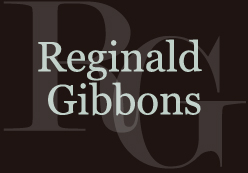Pink confused with white
I used to think (for good reasons, I believed) that it was mistaken to see metrical feet in free-verse lines. Picking them out was irrelevant as a way of describing the rhythms of free-verse lines, simply because free verse isn’t metrical, and how it works rhythmically has to be described differently because what we feel when reading its rhythms, when feeling them with our own individual readerly rhythmic awareness, is different. Free verse isn’t a bunch of metrical feel amidst other syllables that we don’t feel, rhythmically. It is a number of different, distinctly non-metrical (and in fact anti-metrical) varieties of rhythmic expressiveness.
But now I have come to think that at least in some poets—the ones who invented some of the possibilities of free verse—what we see is rhythmic figures that originated in metrical verse but continued to be used in free verse. These figures not only have expressive value—that is, not only do they emphasize feelings, ideas, movement of events, contrasts of images, etc. (which randomly conspicuous metrical feet in free verse don’t do). They’re also echoes or allusions to metrical verse—that is, they relate the free-verse poem in which they are present to earlier poems and poetics.
I’m going to illustrate the free-verse use of rhythmic figures inherited from metrical verse with a canonical poem by William Carlos Williams (b. 1883). Of course, Williams, Ezra Pound (b. 1885), and T. S. Eliot (b. 1888) were perhaps the three most prominent inventors of modern free verse (of three or more different sorts). (See my earlier post on Pound’s “The Return,” March 6, 2011.) Contemporaneously with the unprecedented free-verse inventiveness of these three poets, others were doing more of the same, even though their work was less influential later, in this regard: Mina Loy (b. 1882), H.D. (b. 1886), Marianne Moore (b. 1887), and others. (The amazing little free-verse poems of Stephen Crane [b. 1871] don’t seem to have echoed in anyone else’s work, while the amazing eccentrically measured lines of Gerard Manley Hopkins [b. 1844!], weren’t published until 1918, long after his death, and richly complicated the modernist-era poetics of rhythm.) As later generations developed, in terms of poetics—ifor example Hart Crane (b. 1899), Langston Hughes (b. 1902), Stanley Kunitz (b. 1905), Theodore Roethke (b. 1908), Elizabeth Bishop (b. 1911), Muriel Rukeyser (b. 1913), Robert Lowell (b. 1917), Gwendolyn Brooks (b. 1917), Allen Ginsburg (b. 1926), James Wright (b. 1927), Adrienne Rich (b. 1929), Gary Snyder (b. 1930), Jay Wright (b. 1934) and others—they made the transition from metrical verse to free verse all over again, but in even more various ways, for they had to invent, discover, and extend the poetics of rhythm beyond where the earlier poets had taken it. That is, they moved from metrical to free verse and at the same time had to discover ways of writing free verse that Williams, Pound and Eliot did not, in their way, almost wholly own.
Looking again at that list of the names of poets, I see how massive were the social and political cataclysms around them in their lives. Through the twentieth century which—despite heroic efforts against the politics of hatred, greed, military power, dictatorship, and ideology—was so violent and rancid, politically, there were always some men and women, including poets, among other artists, who found ways not simply to mimic in their art the shattered circumstances in which they lived, the tragic and murderous fragmentation of life, but also to think and feel for a countergesture, in their search for something restorative, or consoling, or compassionate, or simply honest. Yet while the political, social and military horrors of the first World War made Pound and Eliot reject the supposed value of European civilization as it stood in their own time, which had had no power against the irrational and stupid ideas that had killed off so many soldiers and civilians, they also sought out the “fragments” of its now shattered achievement (as they saw it) for the sake of building ideals anew. Even their approach to poetic rhythm was part of this process. And meanwhile Williams took the position of renouncing all the traditional poetics of English in favor of a new sort of poetry that would depict the everyday reality of ordinary American life. For him too, creating a new poetic language was extraordinarily important, but instead of basing it on a kind of homage to, or at times parody of, earlier poetic language (including meter and the rhythmic figures within it), he argued for, and exemplified, the use of the rhythms of ordinary, everyday speech (and in Paterson, even newspaper clippings).
How interesting, then, that what he does in practice—in 1923—is to move completely away, in this poem, from “high” subjects and settings, actions and events, to simple description of something inconsequential, while continuing to find his way toward the kind of free verse he left as a legacy to most of American poetry afterward.
While truly there is a remarkable amount to think about, regarding poetics, in the following straightforwardly descriptive poem by William Carlos Williams, what’s interesting to me for present purposes is the rhythms of his lines. The poem is in the free verse of 1923, but it makes use of many easily heard metrical figures. By this term I mean rhythmic figures that were invented by metrical poets, but which were then carried over (most audibly by Pound, as I mentioned above), into what was developing as free, i.e., non-metrical, verse. First there’s simply the unmistakably sequence of emphatically, not accidentally, iambic feet; and there’s also the chiasmic metrical figure of the trochee followed by an iamb that metrical verse uses at the beginning of a line or after a caesura, but not elsewhere; the packing of speech stresses into consecutive syllables (perceivable in English beginning with the basic two, a “spondee” in metrical verse, but extending to sequences of more syllables than two while remaining metrical, as in the lines from Shakespeare’s King Lear, “No, no, no, no!” or “Howl, howl, howl, howl! O you…” (Act 5, scene 3).
In what follows, I am not “scanning” the poem as if it were metrical, but on the contrary, noticing where the use of speech stress in English, which is not iambic meter but rather the basis of it, echoes or enacts or alludes to metrical figures as free-verse rhythmic figures. That is to say, perhaps, that Williams’s poem is not a free verse isolated from other poetry, but rather a free verse in play with and against the rhythmic basis of iambic meter in English. Williams’s use of the line, which appears to be improvised, in fact echoes metrical verse (Eliot would have said that the “ghost” of meter was behind it), and defines itself rhythmically in that way.
First the poem, then line-by-line a brief commentary:
Spring and All, Chapter XIX, part II.
Pink confused with white
flowers and flowers reversed
take and spill the shaded flame
darting it back
into the lamp’s horn
petals aslant darkened with mauve
red where in whorls
petal lays its glow upon petal
round flamegreen throats
petals radiant with transpiercing light
contending
above
the leaves
reaching up their modest green
from the pot’s rim
and there, wholly dark, the pot
gay with rough moss
Pink confused with white (a “headless” iambic line of three clear feet)
flowers and flowers reversed (strongly rhythmic, but dactyllic, not iambic)
take and spill the shaded flame (another “headline” iambic line, four feet)
darting it back (chiasmic metrical/rhythmic figure, i.e. our line-initial trochee + iamb)
into the lamp’s horn (rhythmic figure, two adjacent stressed syllables, i.e. a “spondee”)
petals aslant darkened with mauve (two consecutive trochee + iamb)
red where in whorls (another of the same)
petal lays its glow upon petal (a line with an iambic “ghost”)
round flamegreen throats (four consecutive stressed syllables)
petals radiant with transpiercing light (a “headless” iambic pentameter line)
contending
above
the leaves
reaching up their modest green (a “headless” iambic tetrameter line)
from the pot’s rim (familiar metrical figure of pyhrric + spondee)
and there, wholly dark, the pot
gay with rough moss (to conclude, the most emphatic rhythmic figures of the whole poem, the presentation of 9 stressed syllables in the last 13)
All of these rhythmic elements are expressive. Williams isolates what the metrical echoes in distinct lines. There’s no need to piece together a string of iambic feet or a rhythmic figure by joining, say, the last words of one line to the first words of the next. For example, the clearly iambic fourth line from the end, “reaching up their modest green” reminds the reader that the apparent casualness of the description of which the poem entirely consists (presenting merely a sequence of literal images which happens to suggest broader meaning in the words that appear ordinary but have metaphorical or metonymical meaning also, such as “confused,” “modest,” “gay”) is in fact highly deliberated. This is a poem, not a newspaper clipping.

